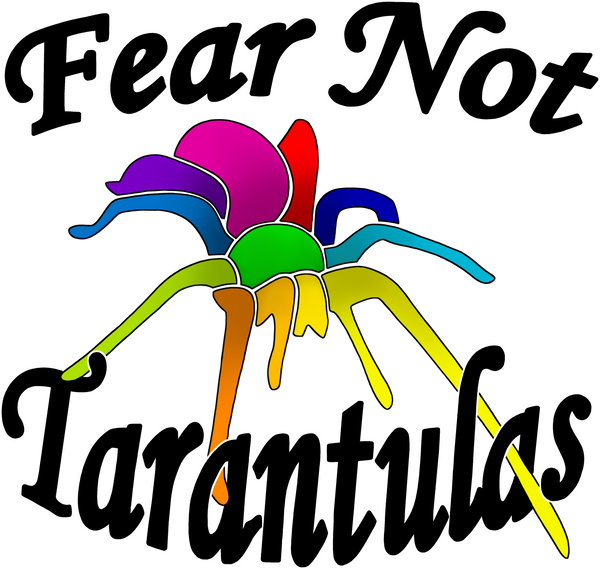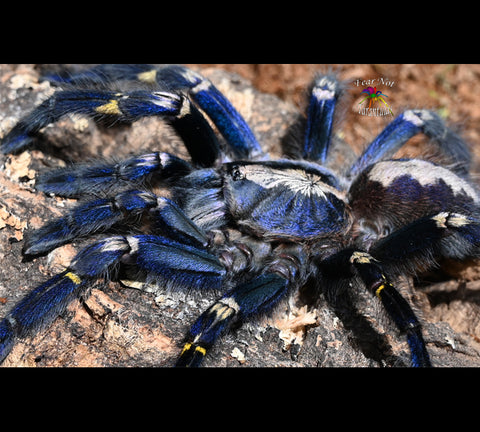Name Pronunciation:
Poecilotheria (pee-suh-luh-THI-ree-uh)
metallica (meh-TAA-luh-kuh)
* Adapted from The American Tarantula Society
Name and Description History:
Poecilotheria metallica Pocock, 1899
Poecilotheria metallica Pocock, 1900
Size: 5-7”
Growth Rate: Fast
Natural Habitat: India. Nandyal and Eastern Ghats area. They seek hollow trees to live in.
Housing Needs: An arboreal setup is needed. P. metallicas require higher humidity levels than most. A hollowed out cork bark tube is a good choice as a hide.
Temperament: This species can be defensive. They are very fast with venom that can cause nerve damage.
Diet: Crickets, roaches, mealworms
About: This is one of the most sought after arboreal species and is a jewel in the trade. Their size and coloration make them an excellent ‘show’ tarantula. Striking bright blue, yellow, and white markings always draw much attention to this beautiful species. Slings are a lavender color and gain more blue with each molt. Adult females have more defined markings as males, and their color will fade to grey as they age. They are naturally found in central southern India, living in trees and eaves of buildings. Its name refers to the area in which it was discovered, a railyard in Gooty, but we now believe it was transported there by train. There are small, endangered populations found in a protected forest area in the state of Andhra Pradesh. This is a very fast, defensive tarantula that has strong venom that can cause muscle cramping, headaches, swelling, and intense pain. For that reason, some experience is advised before adding an adult P. metallica to your collection, and handling is not recommended at all. This species has a high feeding response, and it never fails to put on a show at feeding time!


